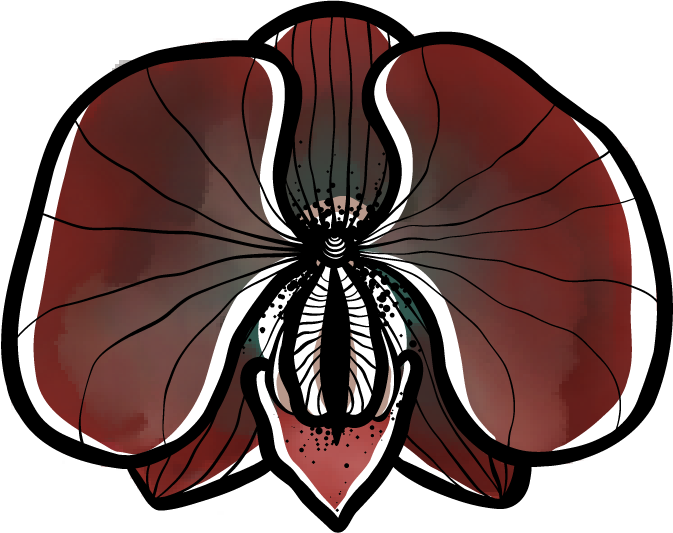There’s a pearl of wisdom I want to share, but it requires me to first untie the story of a pearl as you may know it.
A pearl’s origin is a story juicy with symbolism. A grain of sand makes its way into a shell and begins to irritate it. The irritation, over time, becomes the queen of gemstones, a pearl. We drape it around our necks as a symbol of the beauty that comes from strength and perserverence.
But the truth of how a pearl comes to gain its beautiful strength, like most hero’s stories, is far more violent.
Routine Irritants
If you’ve ever eaten a bowl of steamed clams or mussels, you have probably experienced the unpleasant crunch of a grain of sand that often accompanies them. Sand is everywhere in the ocean. It’s a way of life for mollusks and mermaids.
If sand were the problem, pearls would be so plentiful they would be practically boring. They would symbolize strength in the face of routine irritations, hardly worthy of adornment.
Anyone who has drummed their nails in a traffic jam knows that routine irritations aren’t substantial enough to make something so powerfully beautiful. No, what forms a pearl’s lustruous strength is an attempt at a violent overthrow.
A pearl begins when a parasite, far less common than sand, drills its way through a mollusk’s hard shell and tries to eat it alive. But the mollusk won’t be taken down easily – it excretes a substance, called nacre, to encase the parasite. After several years of battle, we have a precious gem that stood in defense of the soft flesh inside.
What’s Actually Inside
Nature could have given the mollusk many kinds of defenses. For example, spitting out the parasite or using a symbiotic cleaning organism. But She offered us instead an iridescent sphere that swaddles death threats so beautifully we pin them to our earlobes.
And you thought the other story was rich with symbolism.
Your Mushy Insides
We are not mollusks. We have spines that allow us to stand up to our enemies, feet that allow us to run, tongues that can talk our way out of a tight corner. Our bodies are a complex maze of organs, emotion, and action that are an ocean away from the average oyster.
But at the center of all this, we are like them – soft, wet puddles.
This ephemeral delicateness surrounded by structure makes us that perfect balance of strong:beautiful, if only we would stop shutting our shells to its full possibility.
Drop Your Weapons
The human response to feeling so mushy at the core of our sturdy bodies is perplexing. So we hype up the side of structure – encasing ourselves inside homes, accomplishments, or job titles – or we respond with threats that make getting within 50 feet inhospitable. We name the winner as the one with the most armor and wonder why we all feel so desperately alone.
But imagine if we trained daily with the aim to allow for both to exist – the firm and the supple, each allowed to flourish, while offering the other the wise mirror they each need. We might become the adornment we’re looking for.
The Strength of Softening
Soft and strong are complementary states of being. Pushed too far in either direction we lose ourselves. But the only good news about hard times is that in them we are offered yet one more chance to practice returning to balance.
No matter how weak we think we are – physically, emotionally, mentally – we can look back through our strong eyes and see how we responded with tremendous courage in the face of a formidable foe.
Likewise, no matter how solid we think we are, we will eventually find ourselves to be those soft, wet puddles we thought we left in the mud. As we are flopping around in times of grief, loss, chaos, transition, illness, etc., we can honor the tenderness of those places where we can still be penetrated and ask what they say about what we value.
True Strength
Strength is worthless if it is inflexible. Softness is useless if it is given no container. Ask anyone who works with the body – rigidity in muscles or mind leads to snapping and breaking, and hyperflexibility causes us to give up who we are to whomever happens to show up.
Like mollusks and all living creatures, we aren’t meant to show up the same way every day. Our outer and inner landscapes change constantly – this is the way of Nature. This truth doesn’t require us to hide behind an arsenal. Instead, it asks us to build the beautiful, flexible strength of right response guided by wise intention.
Let this be the definition of true strength: the ability to retract and extend, to defend when needed and invite in when it’s right.
How to Win
We can – and should – fight back when an invader is drilling into our homes, but what’s more important than winning today is flourishing in the years after we were nearly destroyed.
So don’t battle so fiercly that you harden your mushy insides. And don’t roll over and pretend it’s all okay. Learn to see danger without expecting its arrival. Allow yourself to spread open when there is, in fact, no crisis.
And if the fight does come, and it surely will in some manner, go ahead and destroy that demon, but keep the fray far enough away that you can separate the invasion from the invaded.
Then, when it’s over, string the thing you slayed on a necklace and show the world the delicate, battle-tested beauty you earned as a trophy of war.





